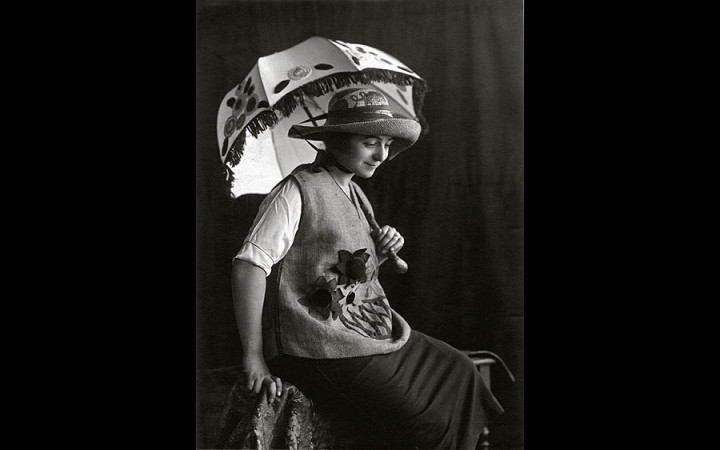Today’s Wonder of the Day was inspired by Lane. Lane Wonders, “Who designed fashion” Thanks for WONDERing with us, Lane!
Do you love color? When you create art, you may use one color and add others to balance it. Color wheels can help identify colors that work well together. Artist Sonia Delaunay helped found an entire art shift based on color pairings. Let’s learn together today about Delaunay, her life, and her artistic career!
On November 14, 1885, Sarah Stern was born in Ukraine. Nicknamed Sonia, she was the child of working-class Jewish parents. While they worked, her uncle and aunt, Henri and Ann Terk, cared for her. These relatives could give Sonia a better life, and they adopted her. They renamed Sarah Stern to Sonia Terk and they all lived in Russia.
Sonia got a chance at a better education in her new life. They sent her to respected schools where she received art education. After the art teacher commented on Sonia’s talent, they sent her to Germany. There she studied at a fine arts academy for two years.
She moved to Paris in 1905 to continue her art studies. But she didn’t agree with the school’s teachings and launched a career as an artist. Terk could see the work of many fine artists at Paris galleries. She enjoyed studying the works of the Fauvism movement. These artists used bold colors and didn’t focus as much on realism as the Impressionists had. Their influence on Terk is obvious. She had her first solo exhibition in 1908.
Terk met Robert Delaunay during her time in Paris. Robert was also an artist. The two fell in love and married in 1910. Besides Sonia’s interest in Fauvism, she and Robert also studied Cubism and Futurism. The Delaunays developed a new artistic style together. They labeled the movement they started Orphism. Its name came from Greek hero Orpheus because of its themes of color and music. Sonia had her own branch of Orphism that matched her ideas. Simultanism was based on the “simultaneous contrast” of colors. This phrase came from a study on color theory.
Sonia Delaunay applied her style to creating different art. She made designs for fabric that she then used to produce quilts, curtains, and shades for lights. Delaunay fashioned clothing, theater costumes, and sets. Department stores worldwide sold her fabrics.
In 1913, Delaunay teamed with a writer to illustrate a book. They printed the book lengthwise on paper almost seven feet long. Delaunay’s art is next to the text and unfolds with the plot. They also filled blank spaces in the text with color. When folded, the book fits into a cover that Delaunay painted. Sonia called it the first simultaneous book.
During the 1920s, Delaunay created more textiles that featured bright colors. She remembered vibrant crafts and clothes from her youth in Ukraine. Those memories inspired her. She also featured colors and images of her surroundings. Her career continued to be overshadowed by her husband’s, however.
In the 1930s, Delaunay began exploring rhythms in her works. She returned to painting when she and her husband worked together on murals for the 1937 Paris Exposition. Officials awarded the murals a gold medal.
Robert died in 1941. Sonia spent time honoring his career and exhibiting his work. Delaunay began solo exhibits again in the 1950s. Galleries around the world featured her work.
Delaunay achieved several milestones in the last 20 years of her life. She became the first living woman to have a retrospective exhibit at the Louvre Museum. She painted the poster for the International Women’s Year—1975. That same year, Delaunay received the French Legion of Honor. On December 5, 1979, Sonia passed away in Paris.
Are you interested in a career in art or fashion design after learning about Sonia Delaunay? Maybe you have a great idea that could launch a new art movement!
Standards: CCRA.R.1, CCRA.R.2, CCRA.R.3, CCRA.R.5, CCRA.R.10, CCRA.L.3, CCRA.L.4, CCRA.L.5, CCRA.L.6, CCRA.W.3, NCAS.CR.1




